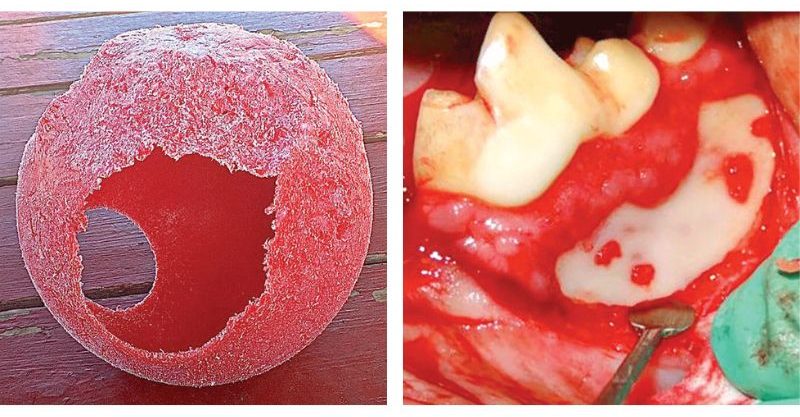Last month’s column featured the dangerous habit of chewing on sticks. Let’s continue the conversation with a discussion of expectations we should instill in our clients about chew items for dogs.
Recently, I have seen many advertisements for yak milk/cheese treats. This treat’s selling point seems to be its durability. Most veterinary professionals have probably already seen problems durable treats can cause, but to pet owners, durability seems mistakenly to be the holy grail. A long-lasting treat allows for less trips to the pet store, or fewer online orders. However, something so durable may be causing harm to the teeth and jaws.
With a few notable exceptions, durability often correlates to hardness of a toy or treat. One example of a durable and popular chew item is the antler.
Antlers have become one of the most common offenders in causing carnassial tooth fractures. Their hardness often withstands the forces applied by the carnassial teeth, leaving the teeth worn or fractured (Figure 1).

Why do teeth break when dogs chew on hard objects? The main reason is the forces dogs can generate with their jaws and their muscles of mastication.
One of the first pilot studies assessing bite forces in dogs was published in 1995. It assessed 22 dogs ranging in size, from seven to 55 kg. Bite forces ranged from 13 to 1,394 Newtons, with a median of 163 Newtons.1
A 2009 study in the Journal of Anatomy looked at cranial size and shape and their effects on bite force using a skull lever model. Results showed bite force increased as skull size increased. Effect of skull shape affected bite forces in medium and large dogs, but not small dogs. Bite forces in dogs have been found to be as high as 3,417 Newtons at the molars.2,3
Another reason dogs fracture their teeth is enamel of a dog’s premolars and molars is relatively thin compared to human teeth. In one study, the enamel was found to be thinner than that in humans, varying in thickness from 0.1 mm-1 mm.4
Another study assessing the thickness of enamel of the maxillary canine tooth in dogs found a range of mean enamel thickness for the entire tooth surface was 0.35-0.44 mm.5 In comparison, human teeth have enamel thickness up to 2.5 mm.6
Enamel is the hardest structure in the body and is comprised of 96 percent mineral. The lack of organic matrix within enamel provides great hardness, but also results in brittleness. Forces placed on the carnassial teeth, if excessive, often result in slab fractures of these teeth, most commonly of the buccal surface of the maxillary fourth premolar. When a slab fracture of the mandibular first molar occurs, it usually occurs on the lingual surface of the tooth, which may be a challenge to identify in the awake patient.
Occasionally, we will see non-carnassial teeth fracture due to chewing hard treats and toys. Premolars, incisors, and canines can all fracture under the strength of the jaws closing by contraction of the masticatory muscles. The muscles of mastication include the temporal, masseter, pterygoid, and digastricus muscles. Of these four paired muscles, three of the four are responsible for closure of the mouth, and only one (digastricus) is responsible for opening the mouth.
Soft tissue injuries in the oral cavity can occur due to excessively hard toys. I have seen and heard of a few patients that have chewed on large “indestructible” balls, which resulted in a repeatable erosion of the mucosa and gingiva over the bone of the caudal mandible due to aggressive chewing (Figures 2A and 2B).

I should mention durable toys exist that do not result in broken teeth. Rubber toys can be durable and still be flexible enough that they will not cause tooth fractures. Unfortunately, in my experience, dogs do not seek out rubber chew toys as readily as they do items we would prefer they not chew on, such as antlers, bones, cow hooves, yak milk/cheese, or nylon bones. Join me in advising pet owners items with a certain degree of “give” are better than these hard treats.
John Lewis, VMD, DAVDC, Fellow, AVDC OMFS, practices at Veterinary Dentistry Specialists and teaches at Silo Academy Education Center, both in Chadds Ford, Pa.
References
- Lindner DL, Marretta SM, Pijanowski GJ, Johnson AL, Smith CW. Measurement of bite force in dogs: a pilot study. J Vet Dent. 1995:12(2):49-52.
- Ellis JL, Thomason J, Kebreab E, Zubair K, France J. Cranial dimensions and forces of biting in the domestic dog. J Anat. 2009:214(3):362-73.
- Kim SE, Arzi B, Garcia TC, Verstraete FJM. Bite Forces and Their Measurement in Dogs and Cats. Front Vet Sci. 2018;13;5:76.
- Crossley DA. Tooth enamel thickness in the mature dentition of domestic dogs and cats–preliminary study. J Vet Dent.1995;12(3):111-3.
- Soukup JW, Jeffery J, Hetzel SJ, Ploeg HL, Henak CR. Morphological quantification of the maxillary canine tooth in the domestic dog (Canis lupus familiaris). Ann Anat. 2023;246:152041.
- Ten Cate’s Oral Histology, Nanci, Elsevier, 2013, 122.
